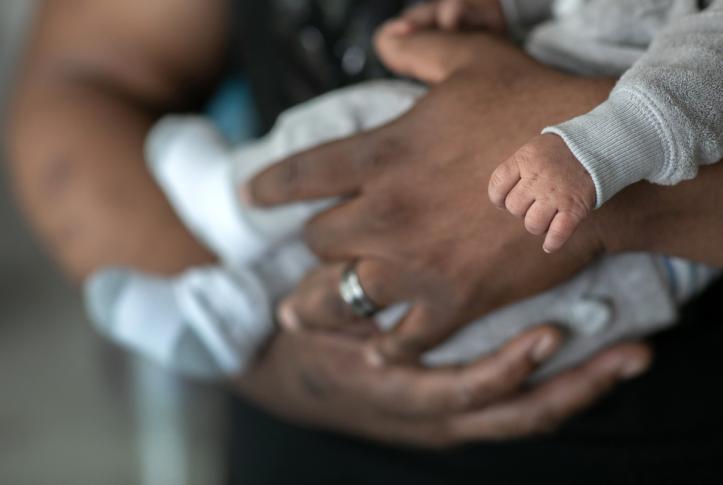Highlights
- Our current system of publicly supported coverage options for pregnant and postpartum women is a complex patchwork that varies tremendously by income, immigration status, and state, leaving many new mothers uninsured.
- Approximately 123,000 of the nation’s estimated 440,000 women uninsured during the first year postpartum would likely be newly eligible for Medicaid or the Children’s Health Insurance Program (CHIP) if pregnancy-related coverage were extended for 12 months.
- Together with existing Medicaid and marketplace coverage, such an extension would mean that 70 percent of uninsured women would likely be eligible for some type of publicly subsidized coverage during the postpartum period.
- Extending pregnancy-related Medicaid/CHIP coverage for 12 months postpartum could increase the number of Americans with insurance during the postpartum period while expanding access to needed health care.
Introduction
The United States is in the midst of a maternal morbidity and mortality crisis. An estimated 700 women* in the United States die each year from pregnancy-related causes, and many more experience severe maternal morbidity.1 Moreover, there are wide racial and ethnic disparities in maternal outcomes, with Black and American Indian/Alaska Native women experiencing much higher rates of pregnancy-related mortality and morbidity than other groups.2
* In this analysis, we use “women” and “mothers” to describe people who are pregnant or recently gave birth. We use these terms to align with the language in the Social Security Act, which defines Medicaid eligibility for pregnant and postpartum women. However, we acknowledge that not all people who become pregnant or give birth identify as women.
The postpartum period is a growing focus of efforts to address this crisis. Sometimes referred to as the “fourth trimester,” it is a time of extensive physical and emotional change for mothers as they recover from delivery and adjust to life with a newborn — and it can be a precarious time for mothers’ health.3 More than half of pregnancy-related deaths occur after delivery: 40 percent occur 1 to 42 days postpartum and 11.7 percent from 43 to 365 days postpartum nationally, with even higher rates in some states.4
The good news is that more than half of pregnancy-related mortality overall and during the postpartum period is considered preventable.5 This suggests that improvements to health coverage and care — including services that address physical, mental, reproductive, and behavioral health needs — can help reduce mortality rates. Meeting these needs has become even more critical during the COVID-19 pandemic and economic crisis.
There is substantial evidence pointing to the importance of insurance coverage during the postpartum period.6 Although nearly all new mothers are covered by health insurance at the time of delivery, pregnancy-related coverage through Medicaid and the Children’s Health Insurance Program (CHIP) expires just 60 days after the end of pregnancy. Research indicates that more than half of women who had Medicaid or CHIP coverage at delivery experienced “churn” — moving in and out of coverage — in the following six months, which would likely reduce access to care, especially during periods without insurance.
The Affordable Care Act’s major coverage provisions, including Medicaid expansion and premium tax credits for marketplace coverage available since 2014, expanded coverage options for women, including those losing pregnancy-related Medicaid/CHIP coverage postpartum. These coverage provisions were associated with lower uninsured rates and improved access to care for women of reproductive age.7 Medicaid expansion, specifically, was associated with coverage gains among new mothers that would be expected to improve their health care access and contribute to health gains.8 These increases in coverage also reduced coverage disparities for Black and Hispanic new mothers.9
Despite the coverage gains the ACA achieved, an estimated 11.5 percent of new mothers remained uninsured during the 2015–18 period, with rates even higher in some states.10
This issue brief assesses the current coverage landscape for pregnant and postpartum women and shows how a postpartum Medicaid/CHIP extension could benefit uninsured new mothers. We:
- provide an overview of existing publicly subsidized coverage options for pregnancy and the postpartum period, including covered benefits and cost-sharing requirements
- review recent state and federal legislative proposals to extend postpartum coverage options and examine how such reforms could expand the coverage landscape for new mothers
- estimate how many postpartum individuals would likely benefit from a 12-month postpartum Medicaid/CHIP extension, based on analysis of 2016–18 American Community Survey (ACS) data using the Urban Institute Health Policy Center’s Medicaid/CHIP Eligibility Simulation Model.
Overview of Public Coverage Options for Pregnant and Postpartum Women
Federal rules require states to offer Medicaid to pregnant women with incomes up to at least 138 percent of the federal poverty level (FPL).11 States can set income thresholds above this minimum, and many extend eligibility to higher levels through Medicaid or CHIP.12
In most states, Medicaid/CHIP eligibility during pregnancy is more generous than it is for nonpregnant women. The median state income threshold to qualify for pregnancy-related Medicaid/CHIP coverage in 2020 is 205 percent of the federal poverty level (FPL) nationwide, well above the median Medicaid income threshold for nonpregnant adults (138% of FPL). Pregnancy-related eligibility ranges widely across states, from 138 percent of FPL in Idaho, Louisiana, Oklahoma, and South Dakota to 380 percent in Iowa (Exhibit 1).
Pregnancy-related coverage is federally required to cover only broadly defined services. Most states, however, include comprehensive benefits in pregnancy-related Medicaid/CHIP coverage, including the full range of nonpregnancy-related health care services, with minimal cost-sharing.
